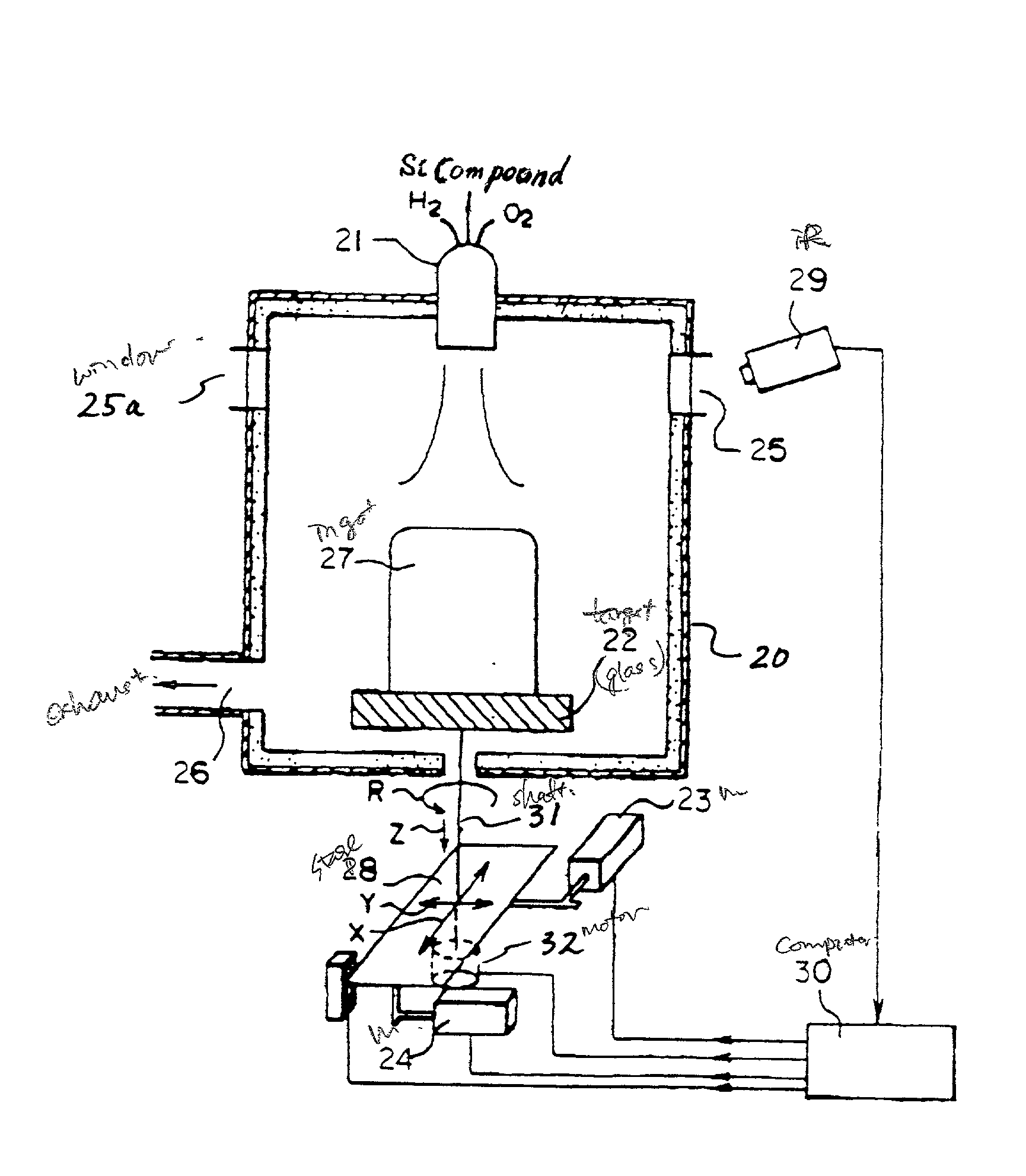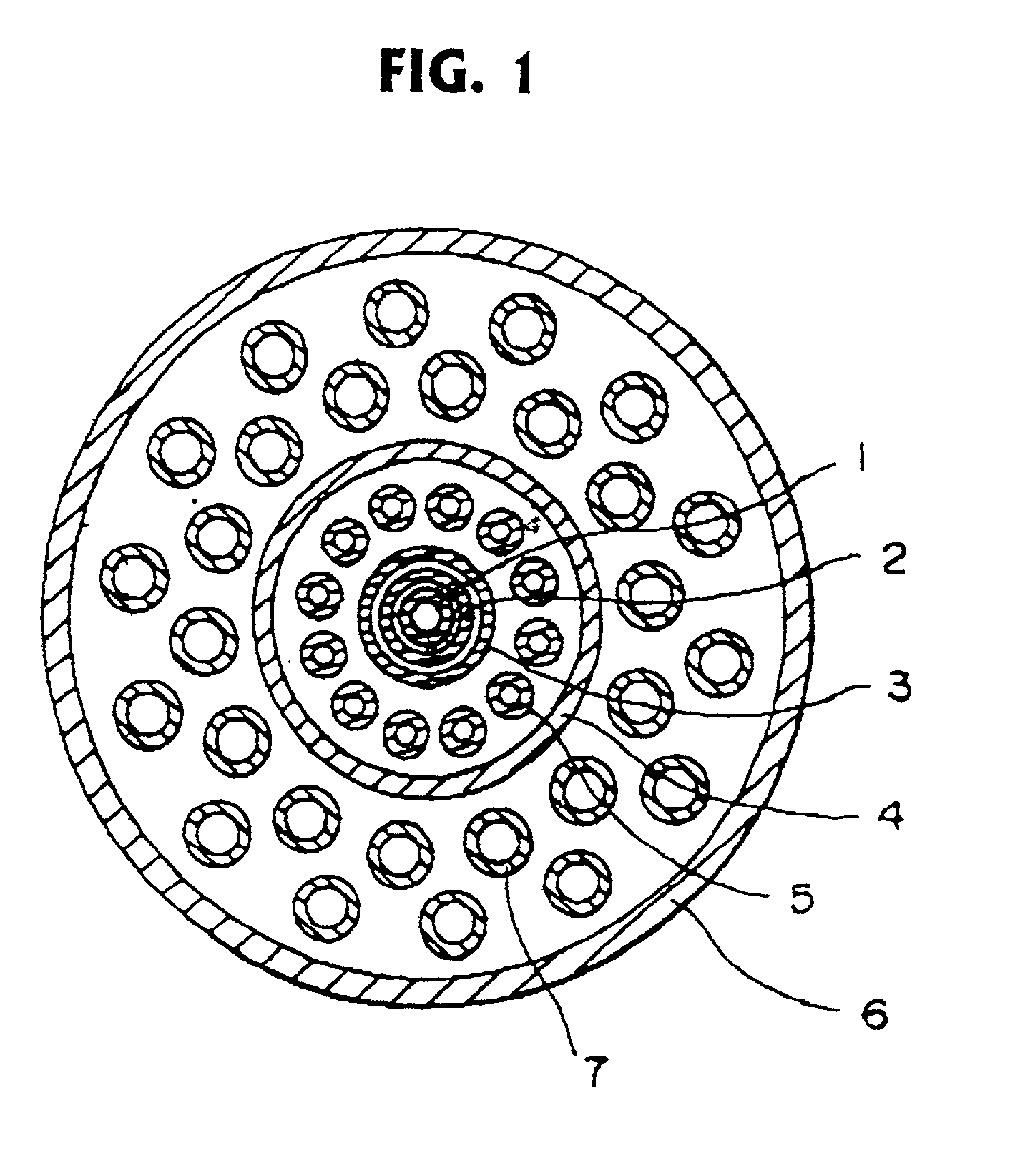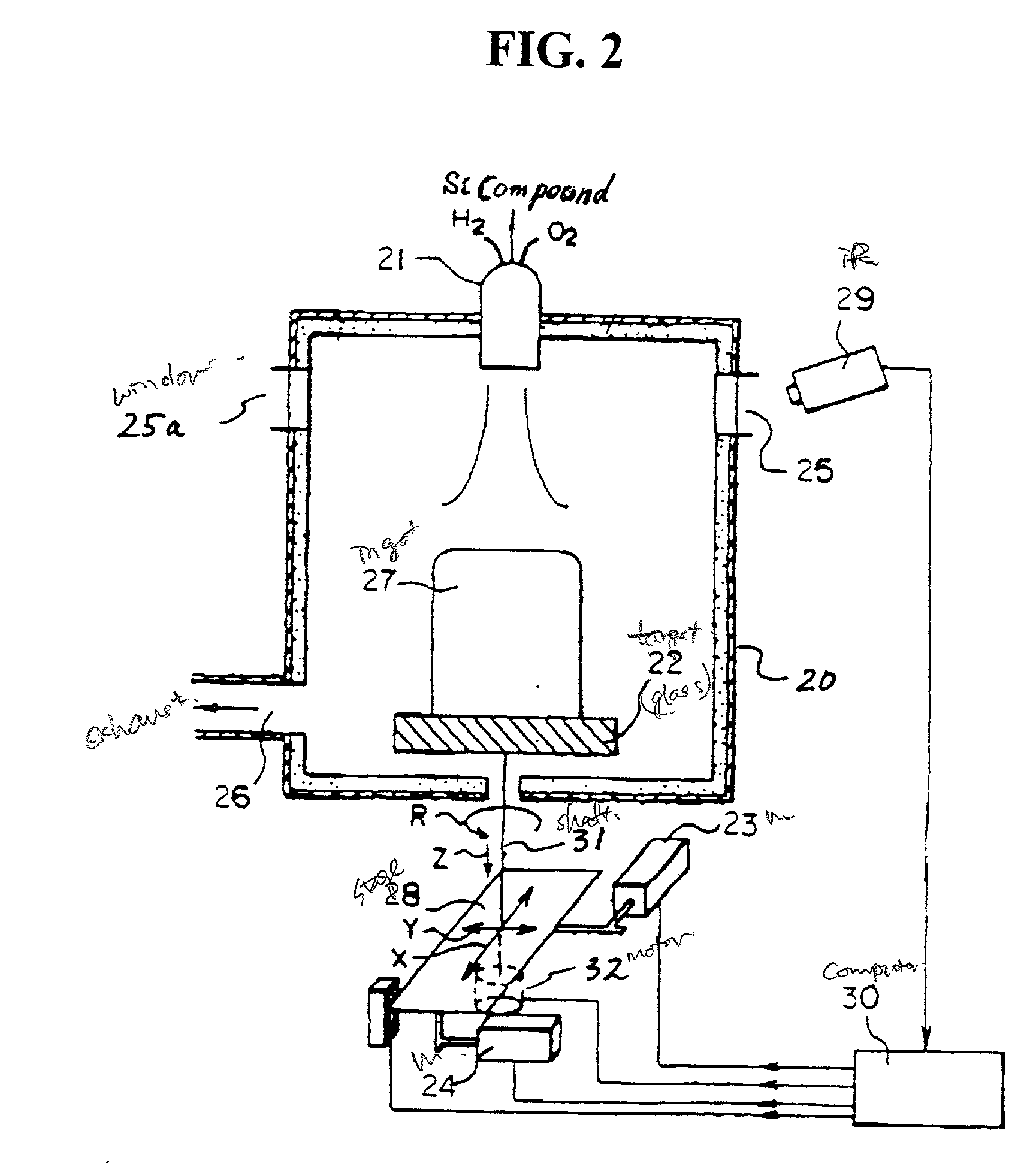Synthetic silica glass optical member and method of manufacturing the same
a technology of optical components and silica glass, which is applied in the direction of glass making apparatus, glass deposition burners, manufacturing tools, etc., can solve the problems of reducing the image-focusing characteristics of lenses, insufficient luminance of wafers illuminated by optical systems, and insufficient silica glass
- Summary
- Abstract
- Description
- Claims
- Application Information
AI Technical Summary
Problems solved by technology
Method used
Image
Examples
examples 1-1 to 1-6 , 2-1 to 2-4 , 3-1 to 3-3
Examples 1-1 to 1-6, 2-1 to 2-4, 3-1 to 3-3, and 4-1
[0056] Various examples of the silica glass of the present invention were manufactured. The silica glasses were evaluated in terms of their respective impurity concentrations. Specifically, the fluorine concentrations and carbon concentrations were measured by ion-chromatography using a combustion method. The Na concentrations were measured by activation analysis.
[0057] High-purity silica glass ingots were manufactured using a silica glass burner having a five-layered-pipe structure. Hydrogen gas and oxygen gas were emitted from the burner at the respective flow rates and flow speeds shown in Table 1 below and were reacted. Material gases (organic silicon compound and halogen compound) were diluted by a carrier gas and were emitted through the center of the burner together with the carrier gas. This method is generally categorized as the "oxy-hydrogen flame hydrolysis method."
[0058] FIG. 2 is a cross-sectional view of an apparatus ...
examples 5-1 to 5-5 , 6-1 to 6-4 , 7-1
Examples 5-1 to 5-5, 6-1 to 6-4, 7-1, and 7-2 (Introduction of Hydrogen)
[0063] Various samples were manufactured employing the burner of FIG. 1 in the apparatus of FIG. 2. Manufacturing parameters are listed in Table 3 below. The resulting samples were evaluated in terms of the concentration of the OH group and the concentration of hydrogen molecules. The OH group concentrations were detected through infrared absorption at 2.7 .mu.m. The hydrogen molecule concentrations were detected using Raman spectroscopy according to the technique disclosed in V. S. Khotimchemko et al., Zhurnal Prikladnoi Spektroskopii, Vol. 46, No. 6, pp. 987-991, June 1987.
[0064] High-purity silica glass ingots were manufactured using a silica glass burner having the multi-pipe structure of FIG. 1. Hydrogen gas and oxygen gas were emitted from the burner 21 of the furnace 20 at the respective flow rates and flow speeds shown in Table 3 below and burned. High purity silicon tetrachloride (for samples 5-1 to 5-5...
PUM
| Property | Measurement | Unit |
|---|---|---|
| Fraction | aaaaa | aaaaa |
| Fraction | aaaaa | aaaaa |
| Fraction | aaaaa | aaaaa |
Abstract
Description
Claims
Application Information
 Login to View More
Login to View More - R&D Engineer
- R&D Manager
- IP Professional
- Industry Leading Data Capabilities
- Powerful AI technology
- Patent DNA Extraction
Browse by: Latest US Patents, China's latest patents, Technical Efficacy Thesaurus, Application Domain, Technology Topic, Popular Technical Reports.
© 2024 PatSnap. All rights reserved.Legal|Privacy policy|Modern Slavery Act Transparency Statement|Sitemap|About US| Contact US: help@patsnap.com










